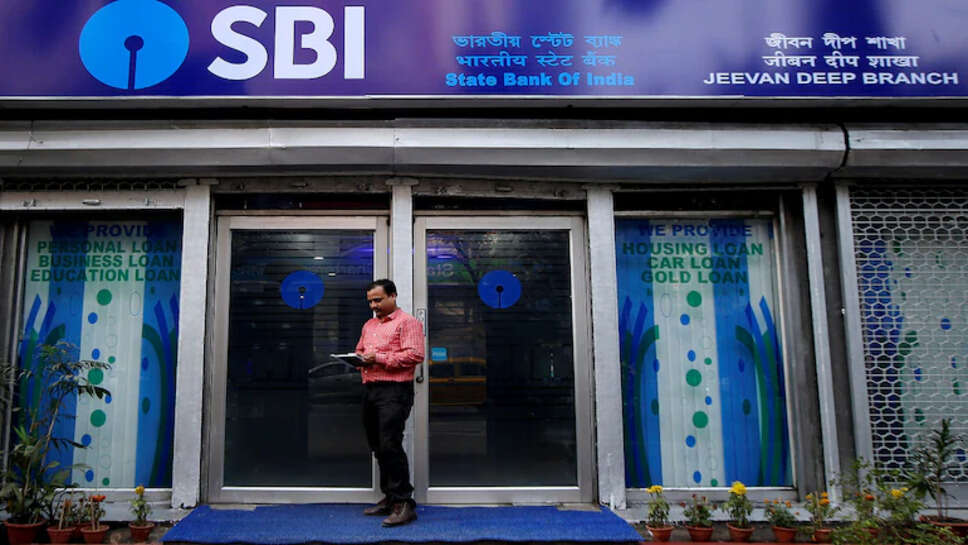State Bank of India Sets Rs 811.05 Floor for QIP Worth Rs 25,000 Cr to Fuel Growth

The State Bank of India (SBI), the country’s largest lender, has launched a massive Qualified Institutional Placement (QIP) initiative to raise ₹25,000 crore, marking one of the largest capital-raising efforts in India’s banking history. The floor price for the issue has been set at ₹811.05 per share, paving the way for institutional investors to buy into the country’s most trusted banking brand.
This development comes amid a broader wave of capital raising by Indian banks, aimed at bolstering balance sheets, meeting regulatory capital requirements, and preparing for future credit demand in a fast-growing economy. For SBI, this QIP marks a strategic move to not only raise funds but also strengthen its Tier 1 capital base to support aggressive credit growth and digital transformation efforts.
A Landmark Capital-Raising Effort
The ₹25,000 crore QIP places SBI among the top Indian banks in terms of equity fundraising. This large-scale capital mobilisation effort signals confidence in India's economic outlook, and in the bank’s ability to leverage upcoming growth cycles across retail, corporate, MSME, and digital banking.
The floor price of ₹811.05 per equity share has been calculated in accordance with SEBI’s pricing formula, reflecting a modest discount to recent trading levels, thereby offering an attractive entry point for institutional buyers. Market watchers anticipate strong demand for the issue, given the bank’s robust fundamentals and reputation as a steady performer in India’s financial ecosystem.
Strategic Timing Amid Economic Recovery
The timing of this QIP aligns with a period of renewed optimism in India’s financial markets. With GDP growth projections remaining strong and inflation showing signs of moderation, the Indian banking sector is poised for a cycle of high credit growth. SBI’s decision to tap into the capital markets now ensures it is well-placed to take advantage of these macroeconomic tailwinds.
Additionally, as regulatory pressures continue to evolve and competition intensifies, capital adequacy remains a critical metric. The additional capital raised through this QIP will help SBI maintain a healthy capital adequacy ratio, ensuring that it meets Basel III norms and is prepared for unexpected macro-financial shocks.
Investor Interest Likely to Be High
Given SBI’s consistent performance, large asset base, and government backing, institutional investor appetite for the QIP is expected to be high. SBI remains a preferred pick among long-term investors and mutual funds for its steady returns, robust governance, and vast rural-urban reach.
Institutional investors, particularly sovereign wealth funds, pension funds, and global asset managers, are expected to line up for allocations in the QIP. The strategic pricing of the issue and SBI’s market position as a low-risk, high-capability bank makes it a compelling buy.
Utilisation of Funds
The proceeds from this QIP are expected to be deployed across multiple strategic initiatives:
-
Credit Expansion: A significant chunk will likely go towards expanding the loan book across high-growth sectors such as retail housing, MSMEs, infrastructure, and green financing.
-
Digital Transformation: SBI is undergoing a major digital shift, and the funds could support innovation in its YONO app ecosystem, artificial intelligence-driven banking solutions, and cybersecurity infrastructure.
-
Risk Management & Compliance: Strengthening risk frameworks, especially in the wake of global financial vulnerabilities, remains a priority.
-
Green and Sustainable Banking: SBI has signalled growing interest in ESG-aligned investments. Capital raised could also be deployed toward sustainable lending, renewable energy financing, and CSR-focused banking.
SBI’s Performance and Future Outlook
SBI has emerged stronger from the pandemic years, with declining NPAs, improved provisioning coverage, and rising net interest margins. Its recent quarterly results have reinforced investor confidence, as the bank reported robust credit growth, stable asset quality, and increasing profitability.
The bank’s CASA (Current and Savings Account) ratio remains strong, providing a cheap and stable source of funds, while its rural penetration continues to be unmatched. With India’s digitisation push and financial inclusion efforts expanding further, SBI is expected to play a pivotal role in the next phase of banking growth.
The QIP will further enhance its ability to lead from the front — in retail innovation, digital banking, sustainable lending, and supporting the government’s infrastructure and welfare agendas.
Regulatory and Market Dynamics
SBI’s capital raising move also needs to be viewed in the context of rising interest rates globally and the need to maintain liquidity buffers. By opting for equity via QIP instead of debt instruments, SBI is also improving its leverage profile.
Furthermore, regulatory frameworks from the Reserve Bank of India (RBI) continue to emphasise prudence, especially for systemically important financial institutions. Maintaining higher capital adequacy is not just a regulatory necessity, but also a confidence-building measure for investors, depositors, and analysts alike.
The QIP also gives SBI more headroom to absorb potential credit costs, especially if global headwinds worsen or if domestic interest rate cycles change again.
Market Reactions and Analyst Take
Early reactions from market analysts suggest optimism about the QIP's prospects. Many believe this capital raising will allow SBI to increase its market share further, reduce dependence on government infusions, and enhance shareholder value in the long term.
There is also a consensus that the timing is ideal. India’s equity markets are experiencing buoyant inflows from foreign institutional investors (FIIs) and domestic institutions alike. With risk appetite returning, especially in the banking and finance segment, SBI’s QIP is likely to benefit from strong oversubscription.
A Defining Moment for SBI
SBI’s Rs 25,000 crore QIP represents more than just a capital infusion — it marks a strategic turning point in its growth trajectory. By strengthening its capital base at a time of accelerating economic activity and rising demand for credit, SBI is preparing for the next decade of transformation.
From powering rural lending to scaling digital services and driving green investments, SBI is positioning itself as a future-ready bank. This QIP could prove to be a critical enabler in that mission, reinforcing its leadership role not just in the Indian banking sector, but also across emerging markets.
As the QIP progresses over the coming weeks, all eyes will be on investor demand and pricing trends, both of which will signal the depth of confidence in SBI’s long-term prospects.
